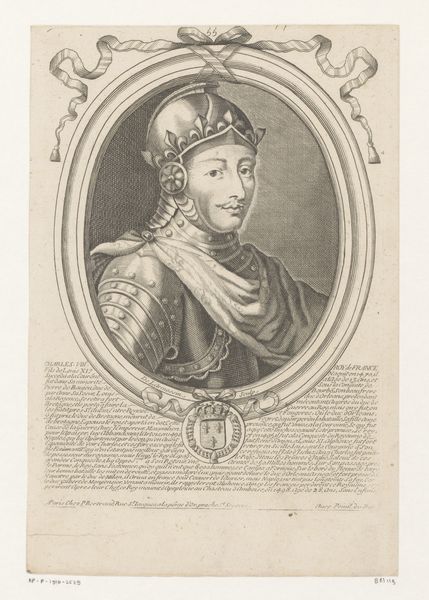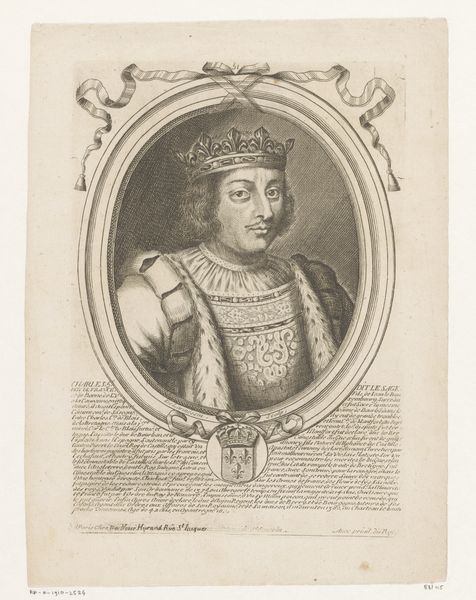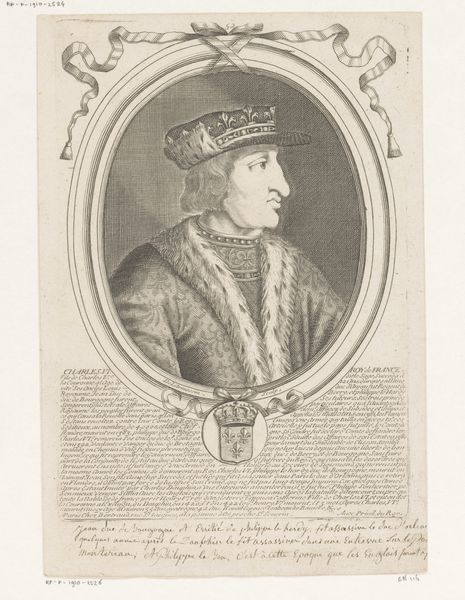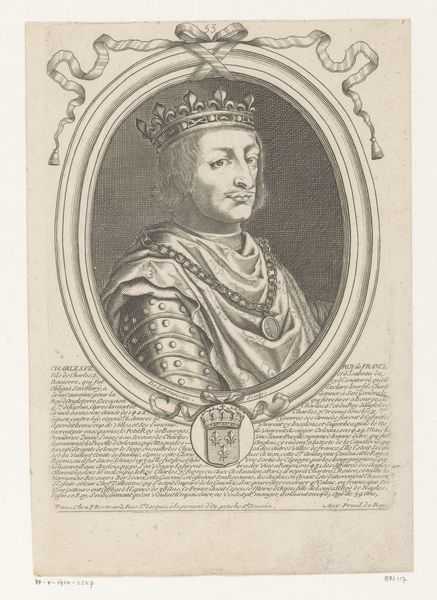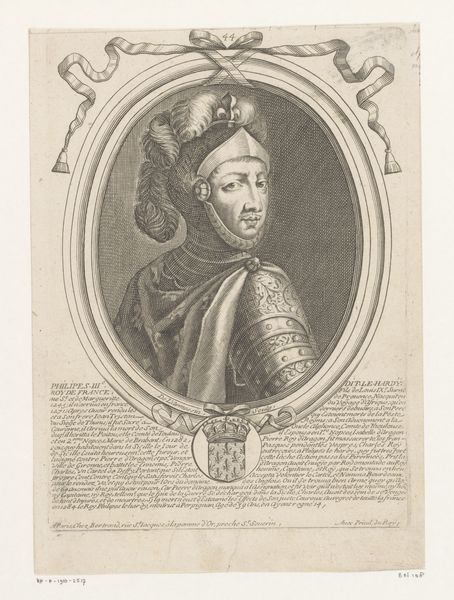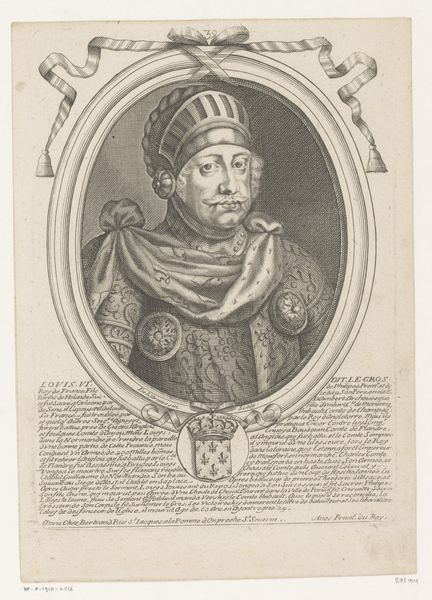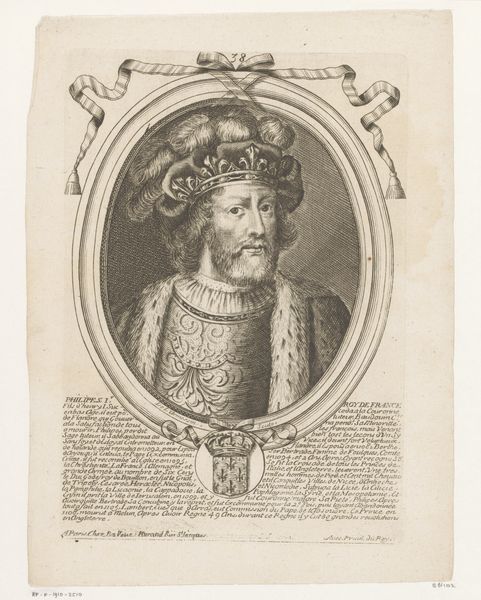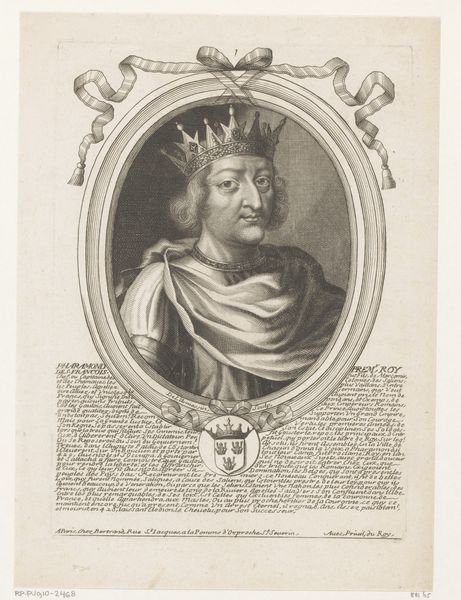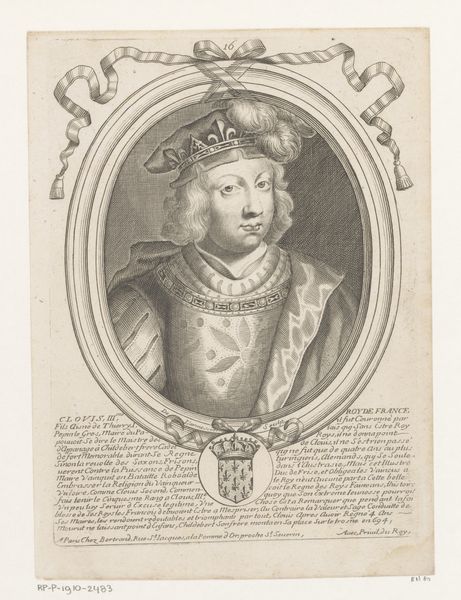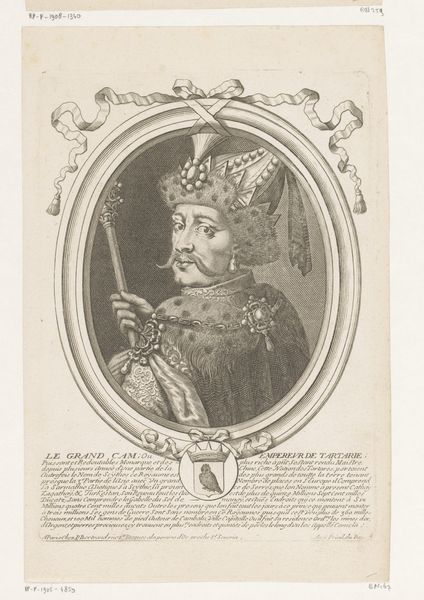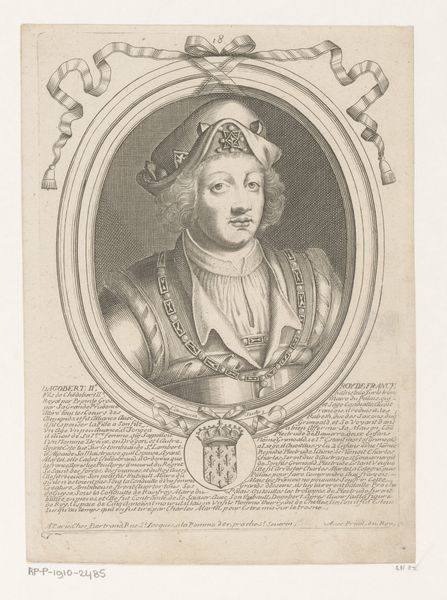
print, engraving
#
portrait
#
baroque
# print
#
old engraving style
#
sketchbook drawing
#
history-painting
#
engraving
Dimensions: height 232 mm, width 167 mm
Copyright: Rijks Museum: Open Domain
Curator: This engraving by Nicolas de Larmessin, created sometime between 1642 and 1678, presents a portrait of Jan II, King of France. The rigid formality is typical for Baroque portraiture of royalty. What stands out to you? Editor: The figure certainly commands attention, doesn't it? Yet, for all his regality, there's an unexpected softness in the rendering of the face, a certain vulnerability that intrigues me. The detail is remarkable. Curator: Let’s look a bit closer. The work employs engraving, a process allowing for the detailed replication of images—crucial for disseminating royal portraits and projecting power across geographic and social boundaries. Editor: Precisely. The use of line is exquisite, constructing volume and texture solely through variation in density and direction. Note the armor, the drapery, each surface defined by the engraver’s skillful hand. It gives a three-dimensional sense on a two dimensional medium. Curator: Absolutely, but consider also how such portraits reinforced the monarchy’s symbolic authority. Jan II is presented not just as an individual, but as the embodiment of France itself. This work normalizes ideas about who can wield authority and power within society, as well as how. Editor: That may well be true, but I see primarily an exercise in the control of light and shade, the masterful use of graphic means to evoke a presence. It seems to highlight shape. Curator: I'd agree—shape and form. Understanding the sociopolitical role this engraving played during a time of social unrest can reveal a whole other perspective on this work. The way it uses semiotics and signifiers makes it uniquely interesting. Editor: Perhaps we can both appreciate how the meticulous craftsmanship serves not only aesthetic ends, but also ideological ones. I would agree the historic and social impacts do help to contextualize this work and our understanding of it today. Curator: Indeed. It's through combining attention to form and context that we truly engage with such works, recognizing their multifaceted roles in history. Thank you. Editor: An enlightening intersection of perspectives; indeed the work really offers something different to us, as viewers.
Comments
No comments
Be the first to comment and join the conversation on the ultimate creative platform.
